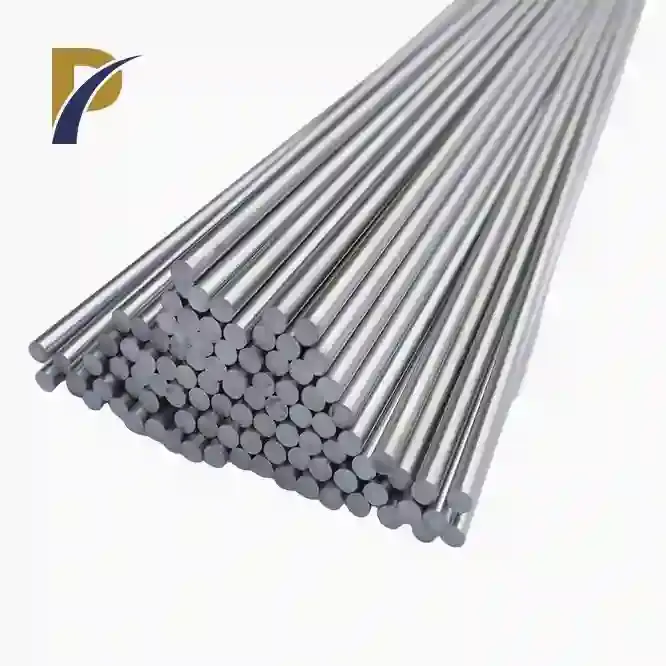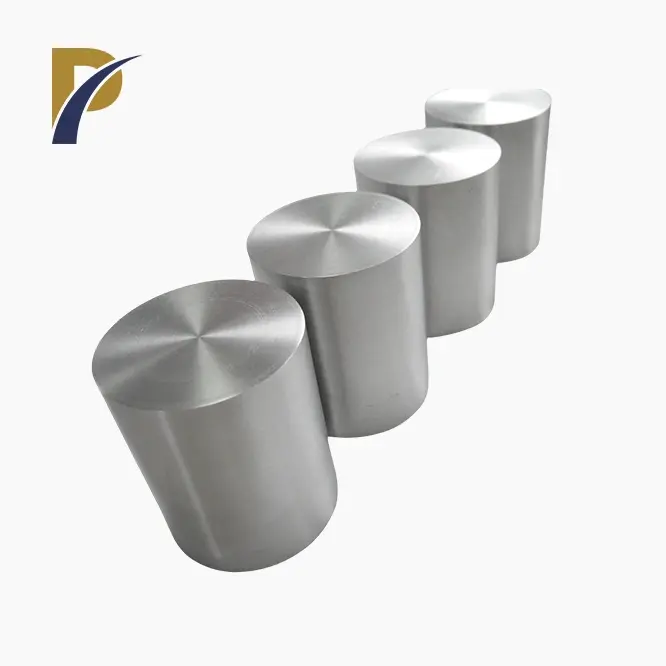TZM molybdenum alloy rod is renowned for its exceptional mechanical properties and high-temperature resistance, making it a critical material in demanding industries. This alloy consists primarily of molybdenum, titanium, zirconium, and carbon, with these elements providing enhanced strength, creep resistance, and durability under extreme conditions. Its unique blend of properties - such as high melting point, excellent thermal conductivity, and impressive corrosion resistance - makes TZM alloy rods an ideal choice for applications in aerospace, defense, and high-temperature manufacturing processes. These rods excel in environments requiring superior strength and performance, especially where conventional materials fall short.
Composition and Mechanical Properties of TZM Molybdenum Alloy Rod
The core advantage of TZM alloy molybdenum rods lies in their chemical composition. Comprising approximately 99% molybdenum, with small percentages of titanium (0.5%), zirconium (0.08%), and carbon (0.02%), this alloy is engineered to exhibit superior mechanical properties.
Strength and Hardness
One of the standout features of TZM alloy molybdenum rods is their impressive strength. The addition of titanium and zirconium serves to enhance its high-temperature strength, making it ideal for applications where intense heat and mechanical stress are present. These rods exhibit excellent hardness and resistance to deformation, even under heavy loads, providing long-lasting performance in critical industrial applications.
Creep Resistance
Creep, or the tendency of a material to deform permanently under constant stress, is a major concern in high-temperature environments. TZM alloy rods offer outstanding resistance to creep, even at temperatures exceeding 1400°C. This makes them indispensable in industries like aerospace and nuclear power, where materials are subjected to prolonged exposure to extreme conditions.
Ductility and Machinability
Despite their strength, TZM molybdenum alloy rods maintain a level of ductility that allows them to be shaped and formed into complex designs. Their machinability is another key advantage, as they can be readily processed into precise components without compromising their structural integrity. This makes TZM alloy rods versatile for a wide range of demanding applications.
Heat Resistance and Thermal Conductivity of TZM Alloy Molybdenum Rod
When it comes to high-temperature performance, molybdenum TZM alloy rods are almost unmatched. They are designed to perform exceptionally well in extreme heat, where most materials would fail. Here's why:
High Melting Point
Molybdenum, the primary component of TZM alloy rods, has a melting point of 2620°C, one of the highest of any commercially available metal. This allows TZM rods to maintain structural integrity and resist melting, even in the most extreme heat-intensive environments, such as furnaces, jet engines, and power generation systems.
Excellent Thermal Conductivity
Another important property of TZM molybdenum alloy rods is their excellent thermal conductivity. This means that they can efficiently transfer heat, making them ideal for applications like heat shields, electrical contacts, and components in high-temperature systems. Their ability to dissipate heat effectively ensures that critical equipment remains operational and safe, even under high thermal loads.
 |
 |
Low Thermal Expansion
In addition to their high thermal conductivity, TZM molybdenum alloy rods also exhibit low thermal expansion. This means that when subjected to extreme temperature changes, they undergo minimal expansion or contraction, ensuring dimensional stability. This property is crucial in precision industries like semiconductor manufacturing, where even small changes in material dimensions can lead to equipment failure or reduced efficiency.
Corrosion Resistance and Longevity of Molybdenum TZM Alloy Rod
TZM alloy rods are not only known for their high-temperature performance but also for their impressive resistance to corrosion and wear. This is another reason why they are favored in many advanced industrial applications.
Oxidation Resistance
While molybdenum itself is prone to oxidation at high temperatures, the addition of titanium and zirconium in TZM alloys significantly improves its oxidation resistance. This makes TZM alloy rods more durable in oxygen-rich environments, where untreated molybdenum would degrade over time. Protective coatings can further enhance this oxidation resistance for long-term performance in the harshest atmospheres.
Corrosion Resistance in Harsh Environments
In environments where corrosive chemicals or gases are present, TZM molybdenum alloy rods offer excellent corrosion resistance. Industries such as chemical processing, where components are exposed to reactive elements, benefit greatly from the use of TZM rods. This resistance to chemical attack ensures long equipment life and reduces the need for frequent component replacements.
Wear Resistance and Durability
Finally, TZM alloy rods boast exceptional wear resistance, which is crucial for applications where materials are subjected to friction and mechanical stress over prolonged periods. This property enhances the longevity of components made from TZM alloy, reducing maintenance costs and downtime in industrial settings.
Conclusion
TZM molybdenum alloy rods offer a special combination of high-temperature quality, excellent thermal and corrosion resistance, and durability. Their capacity to perform in extraordinary situations makes them vital in businesses such as aerospace, defense, energy, and progressed fabricating. Whether you require a fabric that can withstand seriously warm, stand up to distortion beneath stretch, or persevere unforgiving chemical situations, TZM alloy rods are a dependable arrangement.
Contact Us
As a trusted manufacturer of TZM molybdenum alloy rods, Shaanxi Peakrise Metal Co., Ltd. is dedicated to providing high-quality, precision-engineered products for a global customer base. For more information on our TZM alloy products and how they can benefit your operations, contact us at info@peakrisemetal.com.
References
"Molybdenum and Molybdenum Alloys", ASM International, 2020.
"High Temperature Materials and Their Applications", K. Y. Haslach Jr., John Wiley & Sons, 2019.
"The Physical Metallurgy of TZM Alloy", M. A. Dayananda, Journal of Materials Science, 2017.
"Mechanical Properties of TZM Alloy", Journal of Materials Research, 2021.
"Creep Resistance in Molybdenum Alloys", International Journal of High Temperature Materials, 2018.
"Corrosion Resistance of Molybdenum Alloys in Harsh Environments", Journal of Industrial Chemistry, 2020.
